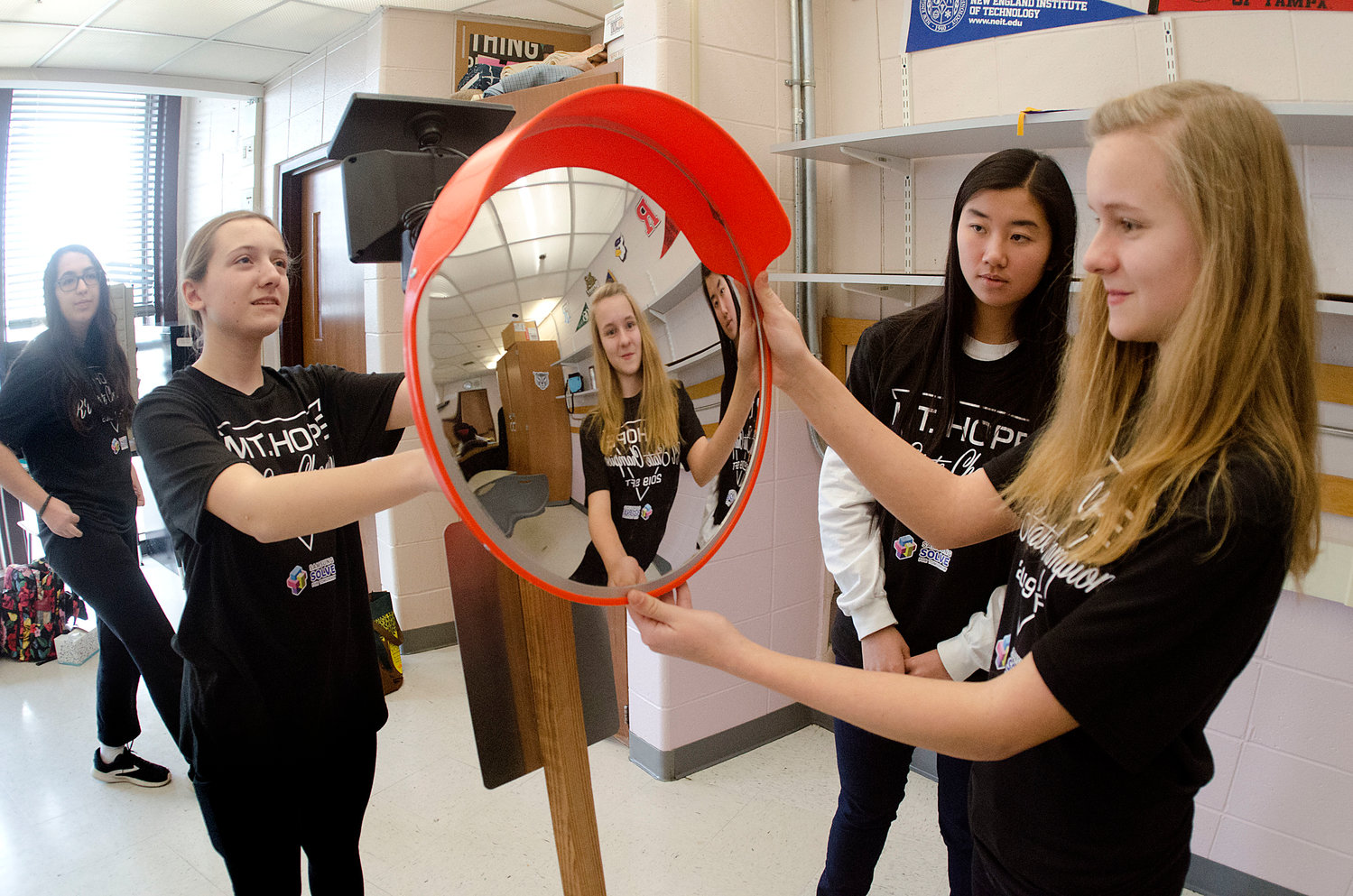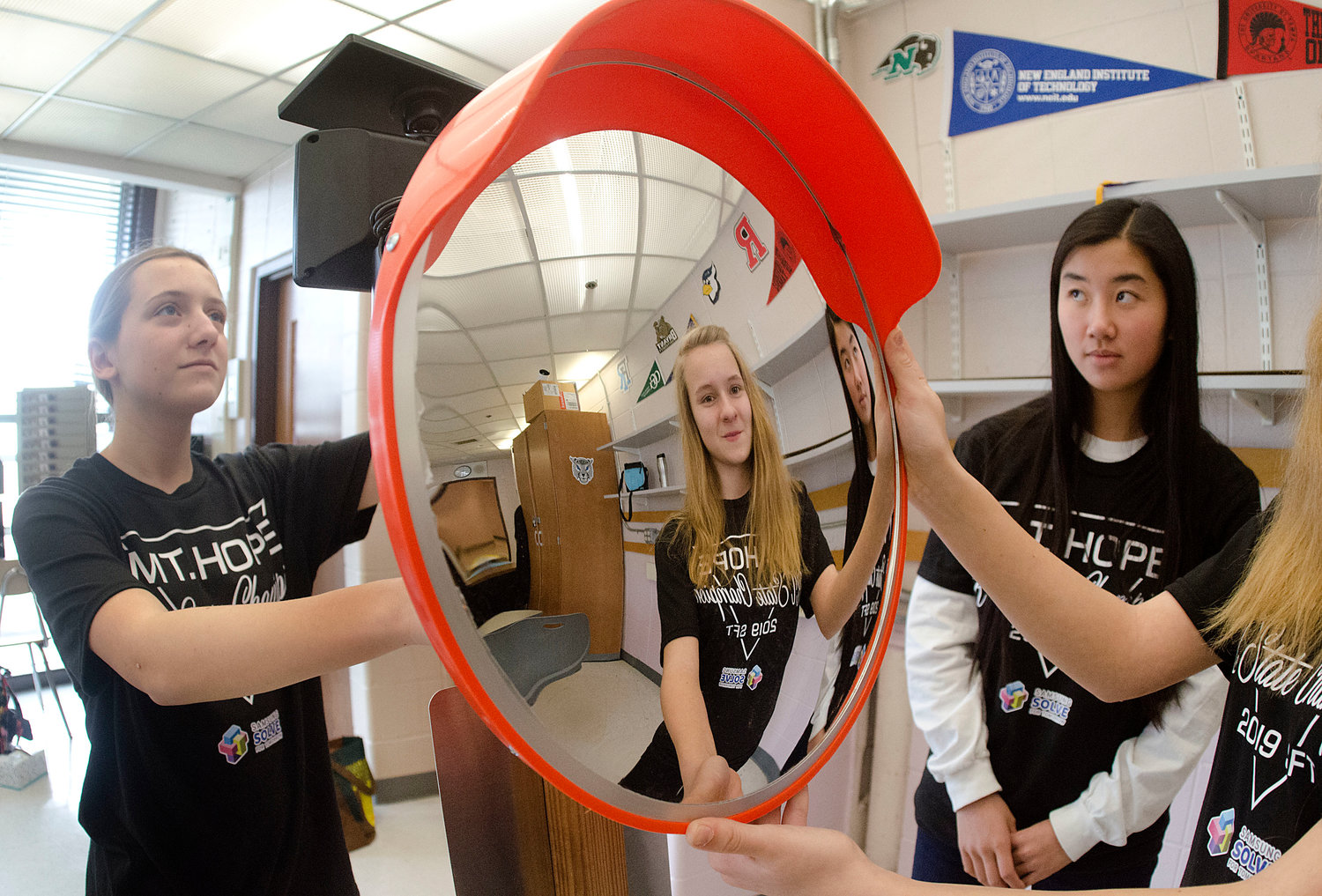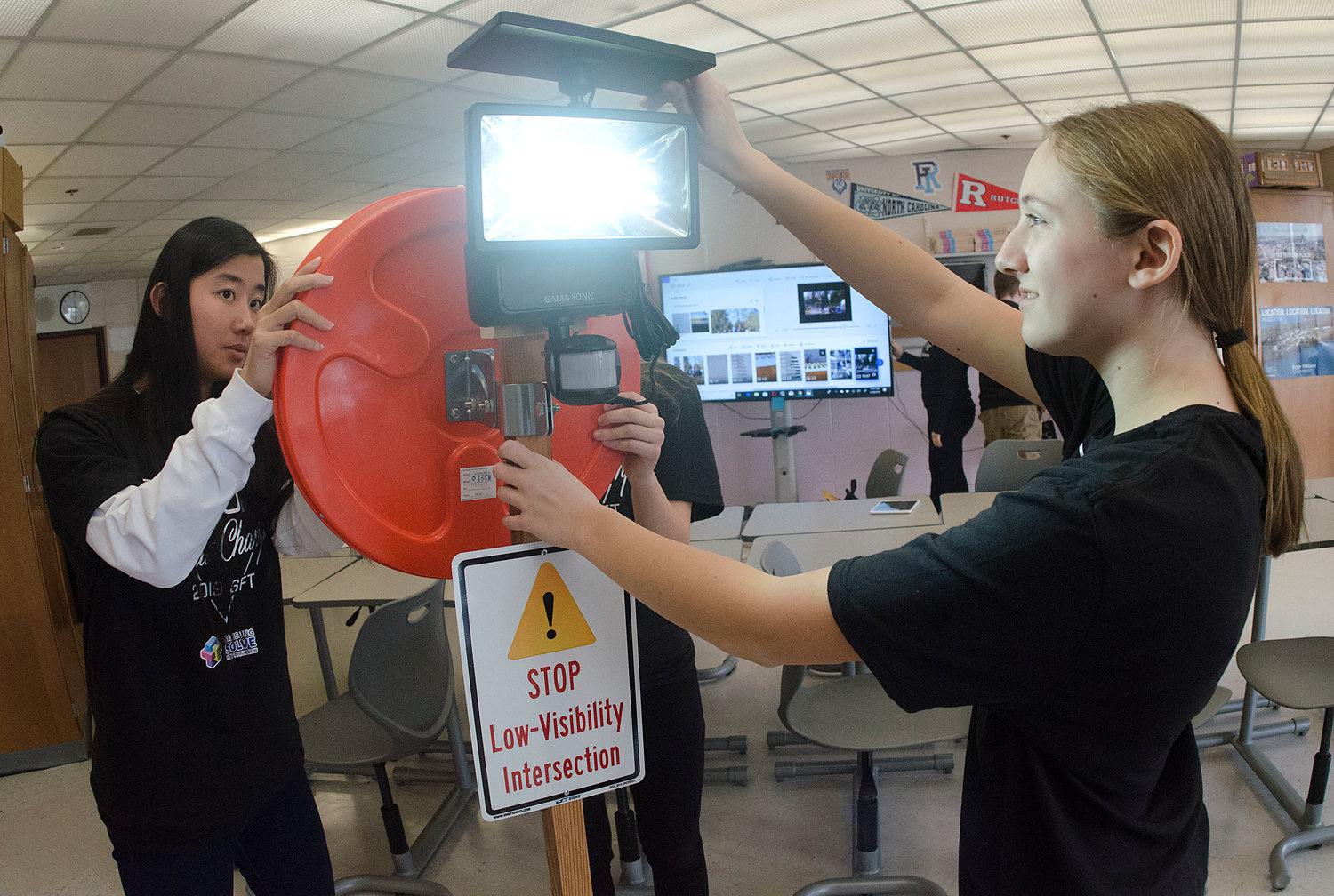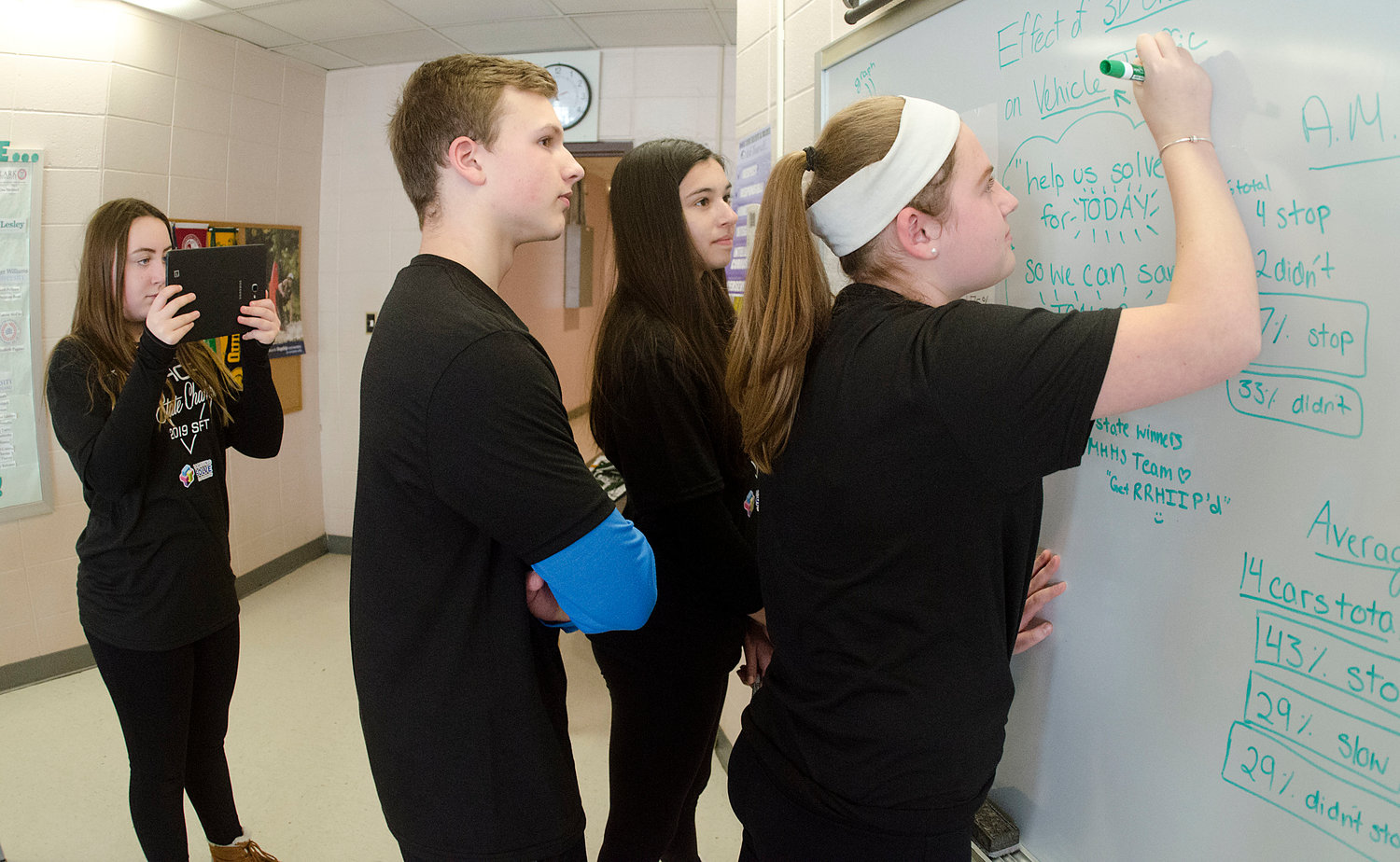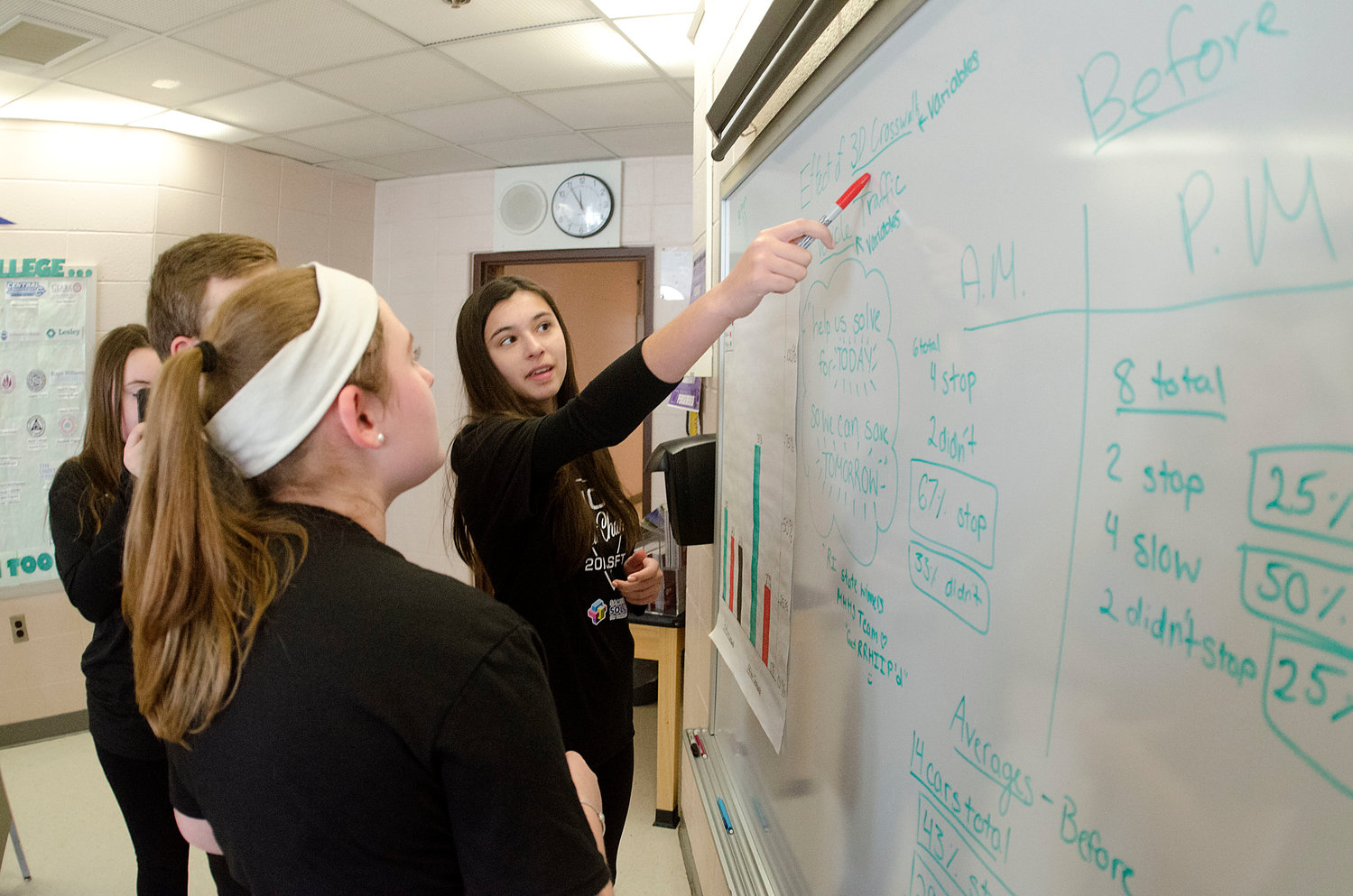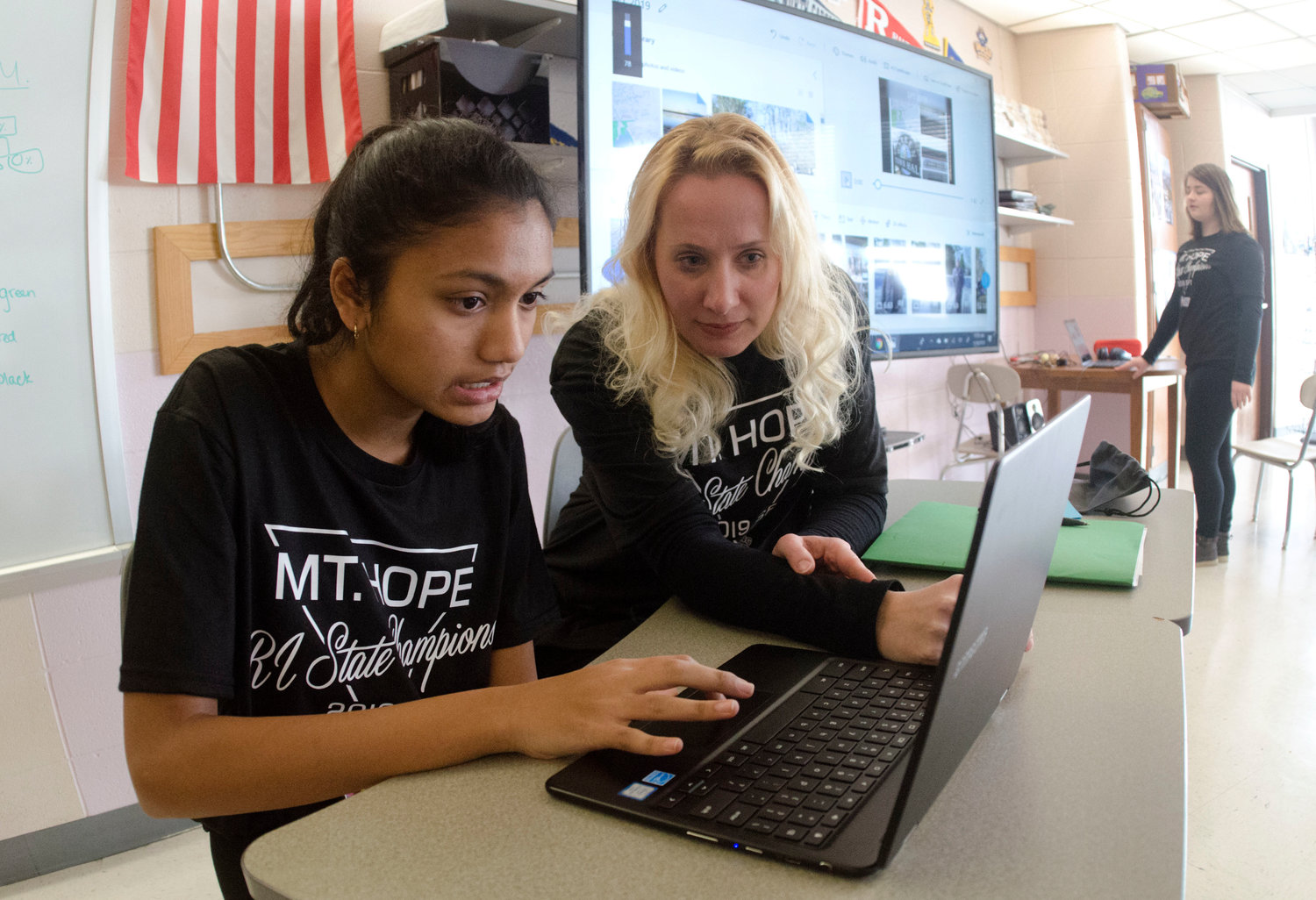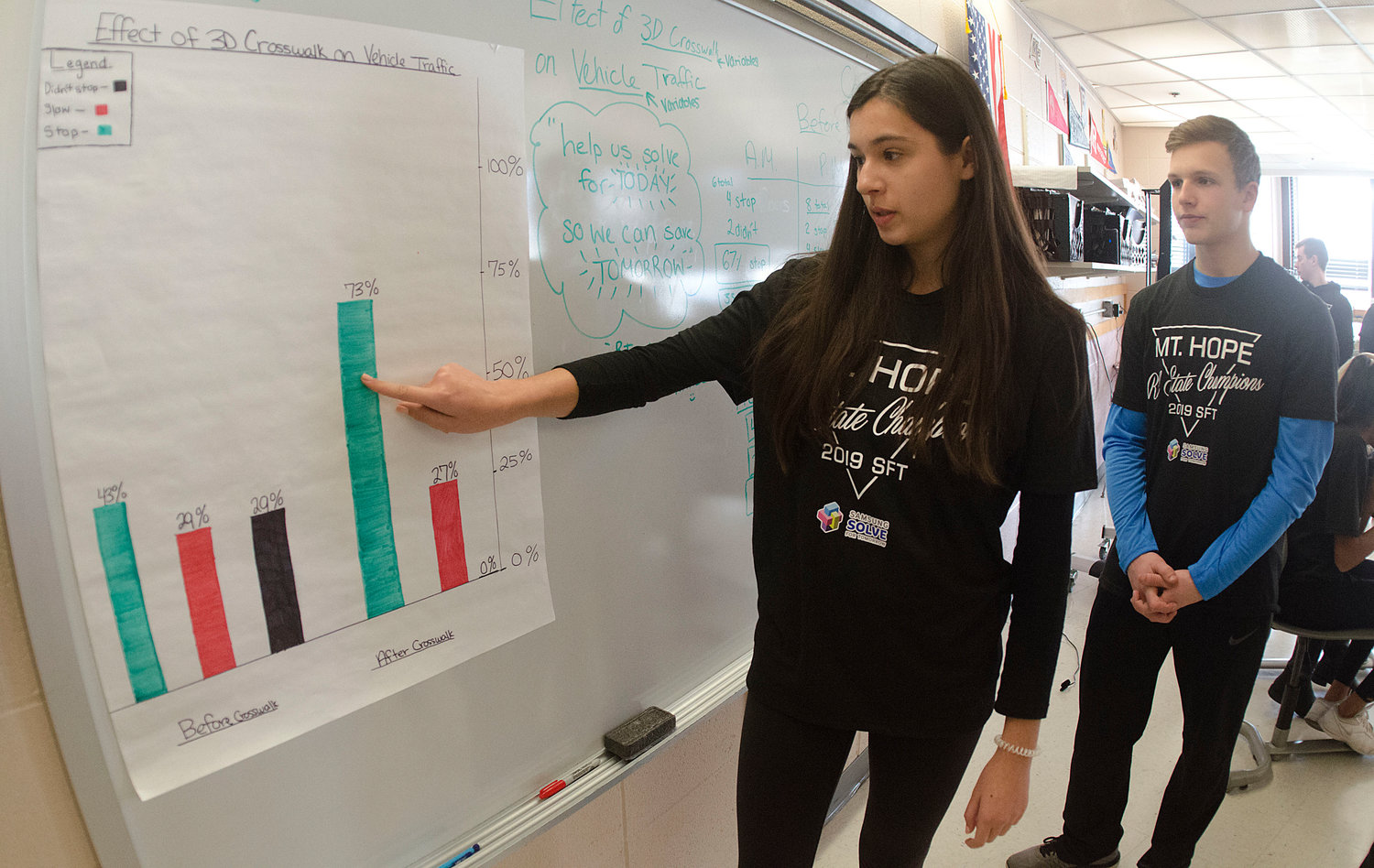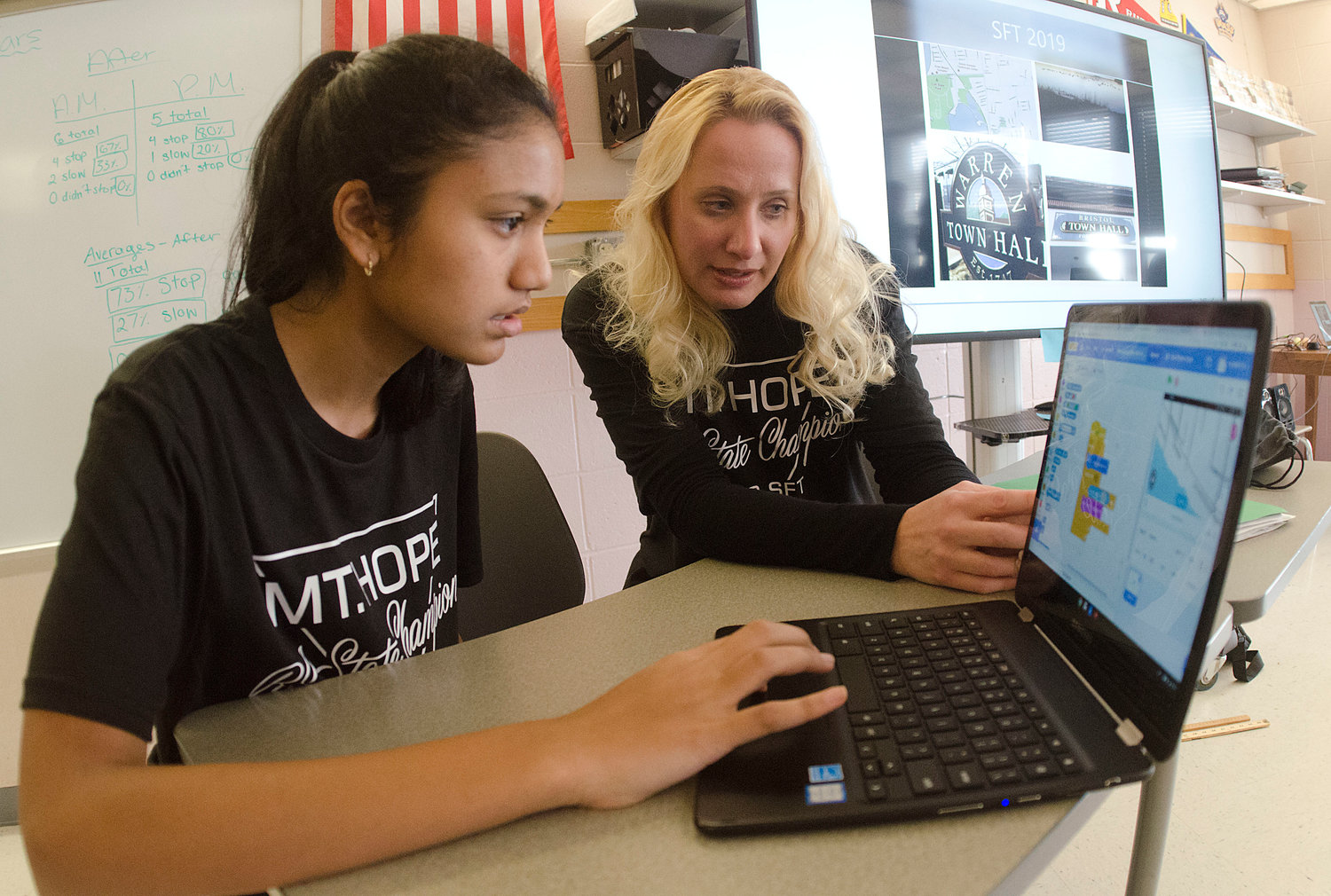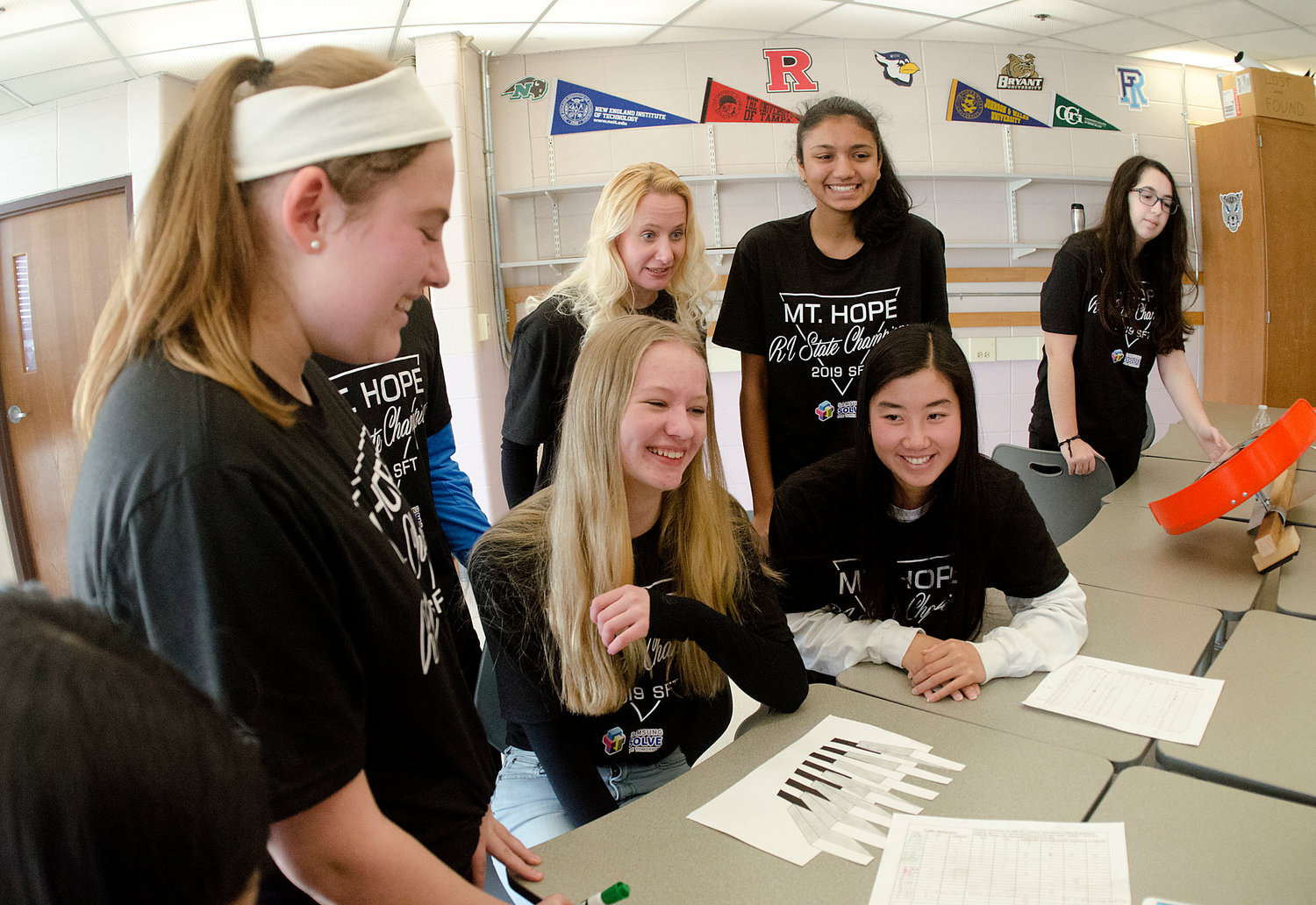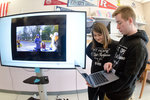Teens use tech and talent to design a safer bike path
Mt. Hope High School freshmen win a state competition while designing a safer bike path for everyone
While most of their classmates were tackling midterms this past Friday, Jan. 18, 12 freshmen students from Mt. Hope High School were taking on a much broader challenge as they worked to creatively confront modern-day dilemmas as part of the 2019 “Solve for Tomorrow” national competition. Recently named this year’s Rhode Island state champions, the students — under the guidance of Kickemuit Middle School Language Arts teacher Mary Cabral — spent the day preparing for their next phase of battle as they take on students from across the country for the chance to have their pitch backed by Samsung and win $100,000 worth of technology and classroom resources for their school.
The problem
After disappointedly falling short of the state title last year as eighth-graders at Kickemuit, Ms. Cabral and her band of students began preparing for the 2019 contest early — very early. Starting way back in June, they began kicking around ideas of local problems they could solve, determined to select one that both felt challenging yet was feasible to attack.
“At the brainstorming stage, you’re coming up with a lot of ideas that are just too big to do,” said Mikayla Ricks. “It was kind of difficult to pin down what was possible for us to do.”
Eventually, the group was able to zero-in on bike safety and began to explore how they could use their diverse skills and educational backgrounds in order to reduce the risk of injury or death when going through crosswalks. With the East Bay Bike Path starting in Bristol and snaking its way through multiple towns on its way to connecting with Providence, the team realized they had an opportunity to enact positive changes that would ripple through a number of communities, not just their own.
Though the death of a 6-year-old boy along the bike path last July only intensified their desire to solve the problem at hand, the students, through their research and field data, found that it was actually not children who would end up benefitting most from their proposal — it was adult males.
“They are the ones who are cycling the most regularly around the seasons, not just summer,” explained Ms. Cabral.
Sometimes unwilling to take pauses in their workout to either stop or slow down at every crosswalk, the adult male group proved to be impacted most by vehicles also failing to stop or slow down at crosswalks. The students found in their field data that, on average throughout the day, only 43 percent of cars would stop when approaching a bike path crossing, while the other 57 percent equally either hesitated first or drove right through.
Based on that information, the students spent the next several months figuring out a way to implement an effective strategy that would both alert drivers of impending bike path crossings while simultaneously warn pedestrians of oncoming traffic.
The solution
Over the course of countless afternoons, evenings and weekends, Ms. Cabral and her team of now-freshmen devised four different approaches to solving their bike safety problem, the most successful of which incorporated a previously-discussed art class concept.
In order to force drivers to pay attention, the students utilized perspective to test out a 3D crosswalk model—already seen in parts of Europe and India — by using graffiti chalk along the bike path crossing at the end of Mulberry Road in Bristol. The results of its impact speak for themselves: with the 3D model created, 73 percent of cars stopped, while the other 27 percent slowed down first. None of them simply drove on through.
Additionally, the students also sought to make enhancements to existing navigation apps like Waze and Google Maps, adding two layers of coding that would audibly notify users of approaching bike path crossings. For the pedestrian side of things, the team came up with two separate approaches — a solar-powered, motion-censored light that would alert bikers of approaching vehicles, and a mirror to offer greater visibility of their surroundings. Everything was designed with the intention of being used together.
Having the freedom and flexibility to incorporate technology into their critical thinking and problem-solving strategies, the group felt, was crucial in order to develop plausible concepts that they could reasonably implement throughout their community.
“There’s a whole wide spectrum of things that you can learn how to do now,” said Miss Ricks.
The process also forced them to consider how their ideas looked from a logistical standpoint in the eyes of individuals and groups, like the Rhode Island Department of Transportation, Bristol Town Council and even Gov. Gina Raimondo. To their relief, everyone has been supportive so far.
“They were excited the kids were applying what they learned in school to real problems,” said Ms. Cabral.
Ultimately, Samsung was impressed as well, naming Mt. Hope as this year’s state champions at the beginning of January — beating out schools such as Providence Career & Technical Academy and last year’s winner, West Warwick High School — and granting them the $20,000 prize.
Next steps
With their sights now set on making it to nationals, the students are all-hands-on-deck in order to finish collecting their data and submit their final video pitch by Feb. 15. In hopes of securing a spot in the Top 10 and earning a shot at the ultimate grand prize, everyone’s talents are being utilized; from research to writing, designing to organizing, each student’s individual skill set has contributed immeasurably to their overall success.
“It’s like a well-oiled machine; everything keeps chugging along,” said Odin Gaudreau.
If selected, the group will have won Mt. Hope an additional $30,000, and four representatives — including Ms. Cabral — will have the opportunity to travel to Washington, D.C. to pitch their ideas. Out of those 10 schools, only three will receive a grand total prize of $100,000 and the sponsorship of Samsung to back their projects.
While they anxiously wait for the results to be announced at the beginning of March, Ms. Cabral and her team will be busy meeting with various leaders in their community interested in the details of their project. They have been invited to a joint School Committee and Bristol Town Council meeting at the end of January, and in February they are set to go before the Warren Town Council. Eventually, though, Ms. Cabral hopes that the hard work her students have put in will reach a much farther scope than just their local area.
“Right now, we affect the East Bay, but we hope maybe it even goes national,” said Ms. Cabral.
No matter what happens in March, though, Ms. Cabral is proud of the growth she has seen in her students since they first started competing as eighth-graders and credits each of the district’s elementary schools for laying the groundwork to where they now stand today. As for the students, they have enjoyed the bonds they have formed and the newfound confidence of knowing they can have a positive impact on the world.
“You’re hanging out with your friends but also making a difference,” said Alice Grantham. “It’s so awesome.”
The Mt. Hope Solve for Tomorrow team includes: Aditi Menta, Chelsea Goodman, Mikayla Ricks, Odin Gaudreau, Allyson Devine, Mikayla Hudon, Abigail Heroux, Kristiana Cabral, Jacob Perry, Eva White, Alice Grantham, Rebecca Oliver and supervisor Mary Cabral.

